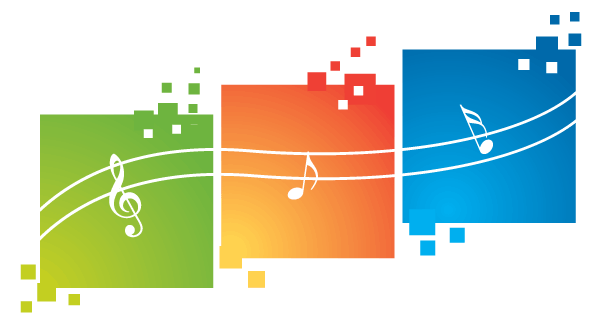
As a show choir judge, I can’t tell you the number of times I’ve sat on a panel and felt like I was on the receiving end of shouting rather than singing as the show unfolded. When this is the case, the number one vocal issue is a lack of understanding of breath support. Essentially, it’s either the throat being the power source instead of the breath, or the breath being used as weight instead of energy. Before we delve into this topic, we need to have a brief discussion about body alignment and what constitutes a good breath intake.
Body Alignment and Breath in Show Choir
I agree with Julie Andrews when she sings, “Let’s start at the very beginning, a very good place to start”; for me, that beginning is body alignment! I’m not referring to the “sit up straight”, “stand at attention like a soldier”, or even the “good posture” kind of alignment. Instead, let’s focus on the body alignment which considers that your body IS your instrument.
Before we break down how this particular form of instrumentation works, let’s make sure we acknowledge that there is power in habit. Younger generations (and our generation for that matter) have developed poor body alignment habits from bending over laptops, texting on phones, carrying book-bags from class to class, and poring over tests at their desks. As choral directors, we’ve certainly got our work cut out for us!
As I address good body alignment practices and why they’re so important, I do realize this is a genre that combines dancing and singing at the same time. But when you are in the beginning stages of learning the music and getting the singing “in their bodies”, it’s vital that this is managed correctly. Otherwise, you will pay for it in frustrating vocal scores for the rest of the season.
What Constitutes Good Body Alignment?
1. The alignment should feel confident, regal, and/or noble, and it should be accompanied by an inner sense of balance and poise.
2. The body should be elongated and tall with a lengthening of the spine.
3. The head should assume an easy position over the body so that the neck is free. For optimal head/neck alignment, I have my singers make sure their ears/shoulders and chin/sternum are in alignment. This opens up the throat for a full body tone.
4. The sternum is elevated with the rib cage feeling open, buoyant, and expanded, giving the lungs and diaphragm room to do their jobs. I often use the phrases “broad shoulders” or “expanded shoulders” to help them achieve this result.
5. The hips. Let’s stop here for a moment. The hips are a place that young singers tend to get out of alignment. Females especially tend to stand in one of two ways, either with the hip and pelvic bone protruding forward, or with a tinge of sway backwards, with the tailbone and buttocks popping out. Ideally, the hips should find a happy medium between the two and be in alignment with the spine, neck, and shoulders. Believe it or not, if the hips are out of alignment, it throws off the head and neck as well as the jaw and tongue.
6. Knees should be loose and relaxed.
7. In regard to stance, the feet should be slightly apart (I prefer shoulder width) and the weight evenly distributed. I encourage my singers to “feel the floor,” imagining they have four prongs (like the prongs at the end of a plug that you insert into an electric socket) that they plug into the floor. The “prongs” are located at the big toe, little toe, and at both sides of the back of the heel. This allows the energy to flow through the entire instrument.
There are three ways to get others to act on a task: ask them, force them, or get them to recognize for themselves why it’s in their best interest. Start your year off by making body alignment of primary importance. Help your singers recognize for themselves why it’s in their best interest. As your students start to wrap their brains around the fact that respiration is the motor that makes the machine run, they will have a better understanding of why correct body alignment is essential.
Tip: One of the biggest culprits to poor alignment is the octavo or music folder. Students can easily fall into the habit of holding the music down closer to their lap and looking down at it, which obviously affects the pharyngeal space. This, in turn, affects the tone. Encourage your students to hold their music up and use their eyes to look at the music rather than hindering the position of the head and neck. Then, hold them accountable for meeting this standard.
Moving Past “Tanking Up”
Young singers need to look at breath as their friend. More often than not, they view breath as something for which they are fighting or gasping. In my experience, left to their own devices, most high school students will “tank up” by taking a high, clavicular breath. I refer to it as the “get ready to blow out all the candles on your birthday cake” breath! I think the origins of the “tank up” breath could be traced back to everyone’s 2nd birthday.
Let’s explore the idea of “tanking up.” When you try to inhale all of the air in the room, you overcrowd the lungs, which induces a faster rate of breath expulsion. Simply stated: When you “tank up”, you trigger the muscles of exhalation. When students take a breath in preparation for singing, they often instill tension. To the contrary, help them think of breathing as a way to satisfy the lungs, not to overcrowd them.
When I teach the initial breath intake, I explain to students exactly what happens as the diaphragm muscle does its work. One of my favorite YouTube videos to show my singers what’s happening inside their bodies is a 3D Diaphragm Demo by 3-D Yoga on YouTube. I turn down the volume so that they are focused solely on what they are seeing. The all-around expansion that is felt at the back, sides, and front, I explain, is the result of the dissension of the diaphragm as it pushes, or crowds, the internal organs alongside the expansive movement of the intercostals.
When breath is taken in without pushing for a result—when the air dropping to the bottom of the lungs is allowed to create the expansion—there is a natural filling out of the front, back, and sides of the body, centering around the waist but also radiating down from there. It may look the same, but it isn’t. The breath itself must inspire the fullness and expansion, and the body needs to be in an optimum position to receive it.
Triggering and Noisy vs. Silent Breath Intake
As we wrap up our discussion of breath intake, I would like to point out that we don’t think about breath in our everyday normal breathing. The muscles automatically take the breath in, not unlike how they do when we are sleeping. For singing, however, we have to breathe when the music tells us, and we breathe at specific times according to the phrasing and rests in the music. This is why it’s necessary to train yourself to become aware of what the natural action is. Once you have heightened your awareness of the natural action, you can learn to trigger it. A singer’s goal is to take the automatic action and turn it into a conscious process. You still breathe when you want and need it, but you are doing so along natural lines.
Speaking of taking a breath when we want or need it—similar to the process for speaking—the breath should be inspired by the thought about to be communicated in the music. The breath for singing should be a natural response to the musical phrase the singer is about to vocalize.
Before I move on from breath intake, let’s also consider noisy as opposed to silent breath intake. The silence indicates that the root of the tongue muscle is out of the way, the soft palate is raised, and the pharyngeal space is nice and open. Silent breath also encourages the singer to allow the air to drop in-down-and-out. I also use the breath intake to encourage my singers to heighten awareness of their backspace and open up all of that resonant space. One of my voice teachers used to call it “making a reservation for my voice before I sang.” We need our singers to take advantage of the amplification and full-bodied sound that comes with opening up the throat and lifting the palate. The time to do this is during the breath intake!











